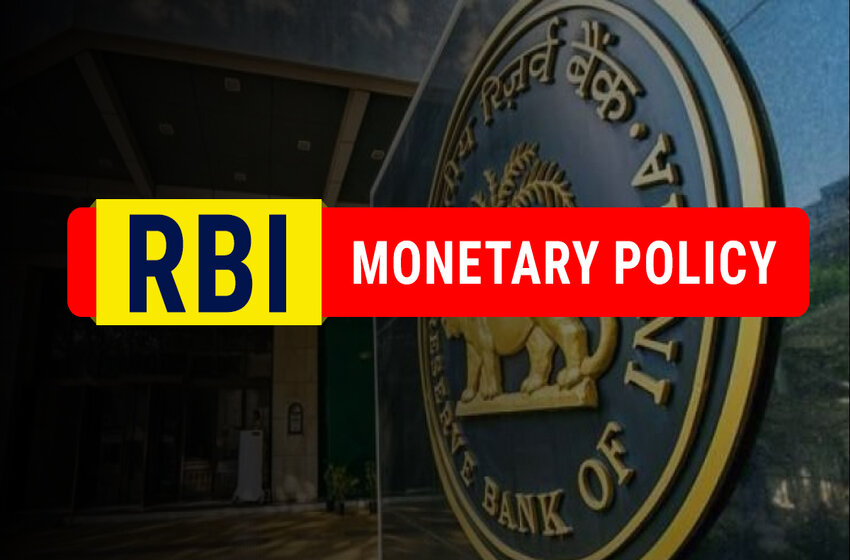
RBI Monetary Policy: Important Date, Details, & News For This Year
- Business Finance
 Andrey Ivanov
Andrey Ivanov- December 9, 2021
- 0
- 7 minutes read
The RBI (Reserve Bank of India) will most probably hold a standard rate of interest for the ninth constant time when it meets on 08.12.2021 (Wednesday) despite the uncertainties that are revolving around the latest Covid-19 Omicron variant. The RBI monetary policy time was at 10.00 IST. Let us see the latest RBI monetary policy 2021.
What The RBI Monetary Has To Say?
As per a Reuters poll that consisted of 50 economists portrayed that the Reserve Bank of India would be holding its benchmark rate of interest at 4 per cent and also the reverse repo rate at 3.35% as per its meeting that took place on December 8, 2021.
However, the Central Bank of India is expected to increase its reverse repo rate in the beginning of the next year and also raise the repo rate in the next quarter. RBI can rest in comfort from the idea that retail inflation, which it considers when deciding the rates of the policies, has been within the 2%-6% target range from July 2021. According to an economist from Morgan Stanley,
"We were previously expecting the RBI to hike the reverse repo rate 15-20 bps in December, but given the uncertainty emerging from the new Covid-19 variant, we now expect the status quo."
He further wrote,
"The central bank is likely to wait to understand the risks posed by the new variant. If the growth impact from the new Covid-19 variant is muted, then we expect the policy normalization to start from February with an increase in the reverse repo rate."
In the meantime, many economists who were surveyed by renowned media houses on 06.12.2021 (Monday) expected the monetary policy committee of the six members to leave the rate of repurchase unchanged at 4 per cent on the RBI monetary policy date 2021 that was on 08.12.2021.
Traders will still search for regulations on the unavoidable return of policy to the pre-pandemic scenario, with the prices in the market in a two stage increase in the reverse repo rate, beginning on 8 December 2021. Only seven among all the economists who were surveyed foresee that taking place, with others estimating no alterations.
Money market rates that are shorter and also the front end yields have already shifted up in the present weeks as the monetary bodies raised the absorption of cash by increasing both the quantum and also duration of the variable rate reverse repo auction. The steps of liquidity absorption collided with the Reserve Bank of India halting their bonds buy program in the October RBI monetary policy, which indicated the beginning of tapering the stimulus of the pandemic era. According to Naveen Singh, who is the executive vice president and head of trading at ICICI Securities Primary Dealership Ltd.
“Expectations of a hike are baked in swaps and bonds levels. Given the RBI has already done proxy normalization through VRRR, it’s a logical step to raise reverse repo rate irrespective of omicron’s spread."
The autonomous yield curve in India has been the highest in a decade, mostly because of the record excess banking liquidity falling short-term rates. The actions of the central bank in discarding excess cash and halting bond buys have in turn escalated cut-off yields in present bond auctions, which have eventuated in higher rates in the market.
Inflationary Concerns As Per RBI Monetary Policy
Inflation, often described by Das as transient, is once again on the way toward the upper end of the RBI’s 2%-6% range of the target. The increasing price of vegetables, mainly that of tomatoes, and a declining favorable base impact may endanger the forecast of central bank’s 5.3% headline growth of price forecast for the fiscal year that is ending March.
Issues over price pressures would evidently be a topic of interest, primarily in the backdrop of Jerome Powell’s comments who is the Federal Reserve Chairman. According to him, it was time the Fed retired the illustration of raised inflation as “transitory.” But that alone may not be sufficient to poke Indian policy makers into activity just yet.
5 of the 6 MPC members were, as of October, still in support of keeping the policy stance cooperative to guard off risks from global evolutions. With the latest omicron variant spreading quickly, it could be just the cause the RBI requires to stand pat. According to Kunal Kundu, an economist with Societe Generale GSC Pvt. in Bengaluru.
“The world is waiting for more data to understand the potential impact and efficacy of the existing vaccines against the omicron variant. If RBI too perceives it as a threat to the nascent recovery, it may want to put on hold plans for policy normalization."
Growth Risks Revolving Around The RBI Monetary Policy
While the latest indicators of high-frequency from buying the surveys of managers to consumption-tax information portrays Asia’s third-biggest economy has momentum, those profits could be wasted should risk from the rapid spread of omicron. As of now, the Reserve Bank of India is predicted to retain its evolution forecast at 9.5 percent for the fiscal year that is ending March, while hosting downside risks. As per the RBI monetary policy on share market it can be expected that the stock market will be relieved that any negative surprise is missing. An expert on the RBI monetary policy said,
“Headwinds from softening external demand, global supply bottlenecks, inflationary pressures and expected Federal Reserve tapering are likely to temper the strength of the rebound.”

